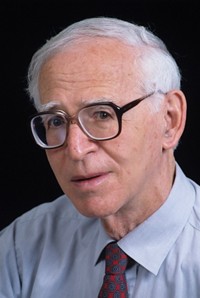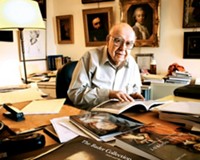Advertisement
Grab your lab coat. Let's get started
Welcome!
Welcome!
Create an account below to get 6 C&EN articles per month, receive newsletters and more - all free.
It seems this is your first time logging in online. Please enter the following information to continue.
As an ACS member you automatically get access to this site. All we need is few more details to create your reading experience.
Not you? Sign in with a different account.
Not you? Sign in with a different account.
ERROR 1
ERROR 1
ERROR 2
ERROR 2
ERROR 2
ERROR 2
ERROR 2
Password and Confirm password must match.
If you have an ACS member number, please enter it here so we can link this account to your membership. (optional)
ERROR 2
ACS values your privacy. By submitting your information, you are gaining access to C&EN and subscribing to our weekly newsletter. We use the information you provide to make your reading experience better, and we will never sell your data to third party members.
ACS News
Manfred Eigen, who measured the speed of fast reactions, dies at 91
Colleagues remember a visionary who had to choose science over a career as a pianist
by Laura Howes
February 12, 2019
| A version of this story appeared in
Volume 97, Issue 7

Manfred Eigen, winner of the 1967 Nobel Prize in Chemistry, died on Feb. 6 at the age of 91. Eigen shared the Nobel Prize for his work measuring the speeds of ultrafast reactions and also helped found the Max Planck Institute for Biophysical Chemistry (MPIBPC) in Göttingen.
“Manfred Eigen had the vision to investigate biological questions using quantitative methods from physics and chemistry,” including many he developed himself, says Patrick Cramer, director at the MPIBPC. “This approach led to fantastic advances in biophysics and quantitative biology, and strongly contributed to the detailed view of many fundamental processes of life.”
Eigen was born in Bochum, Germany, in 1927 and originally hoped to become a pianist. World War II interrupted those plans and so as the war ended he instead chose to study physics and chemistry at the University of Göttingen. Eigen completed his doctorate in physical chemistry at 24 and then became assistant to Karl Friedrich Bonhoeffer at the Max Planck Institute for Physical Chemistry. It was there he started his work to try and measure ultrafast reactions.
In 1954, he presented his breakthrough method. Eigen used an external source of energy, such as high-frequency sound waves, to disturb a reacting system. Then, he measured how long the system took to return to equilibrium. This work made it possible to determine reaction rates in the micro- and nanosecond range for the first time. This achievement was honored with the Nobel Prize in Chemistry together with Ronald G. W. Norrish and George Porter in 1967.
“The Nobel Prize is the culmination of every researcher’s life. But Eigen remained scientifically highly productive in the years that followed,” says Max Planck Society President Martin Stratmann.
Despite job offers from around the world, Eigen returned to the MPI for Physical Chemistry where he was a director. He convinced the Max Planck Society to merge their Physical Chemistry and Spectroscopy institutes to create a larger interdisciplinary institute, the MPIBPC, which was opened in 1971. “It is not the research area that counts,” he said “it is the excellence of the individuals.”
Eigen remained at the MPIBPC for the rest of his career, later focusing his research on directed evolution and the self-organization of matter. He co-founded biotech firms Evotec and Direvo. Eigen wrote several popular science books, and maintained a lifelong love of music and playing the piano. He is survived by wife Ruthild Oswatitsch-Eigen, and son Gerald and daughter Angela from his first marriage.




Join the conversation
Contact the reporter
Submit a Letter to the Editor for publication
Engage with us on Twitter